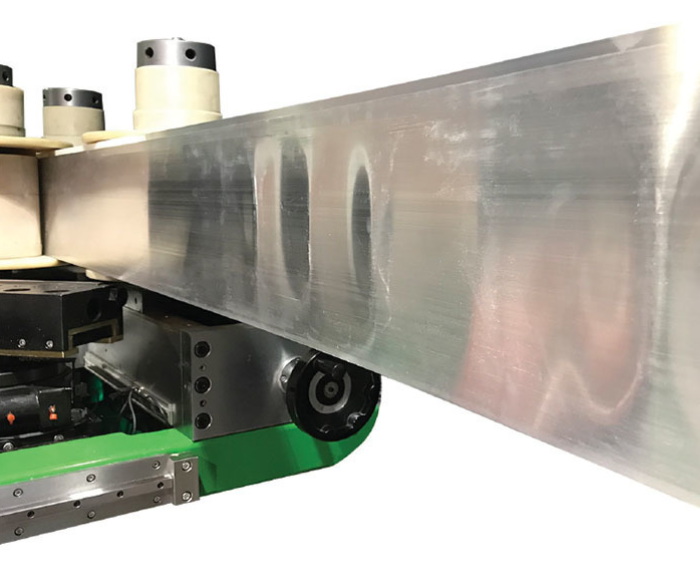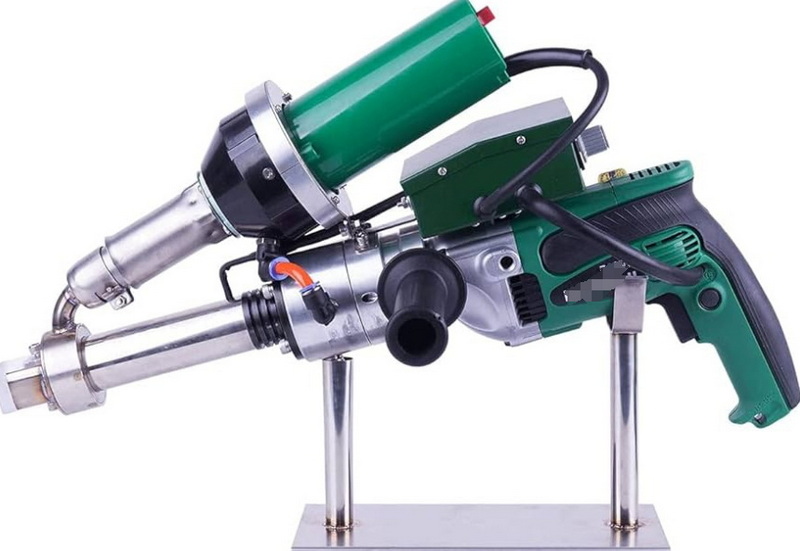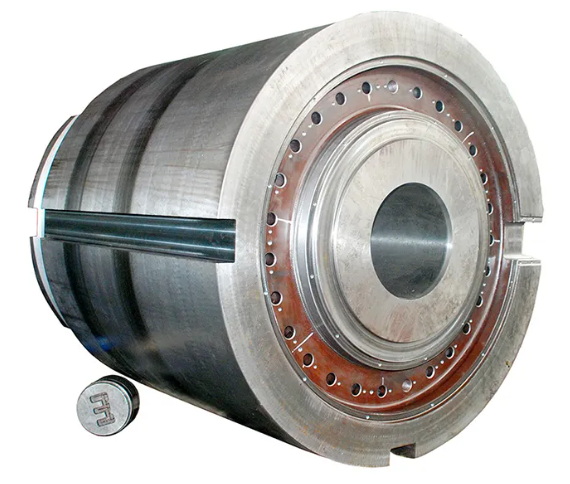Content Menu
● The Basics of Aluminum Extrusion
● The Anatomy of an Aluminum Extrusion Press
● The Role of Side Cylinders in Aluminum Extrusion Presses
>> 1. Container Sealing
>> 2. Rapid Advance and Return
>> 3. Mandrel Control
>> 4. Force Distribution
>> 5. Stuck Mandrel Removal
● Technical Specifications of Side Cylinders
● The Importance of Precision in Side Cylinder Operation
● Hydraulic Systems and Side Cylinders
● Maintenance of Side Cylinders
● Advancements in Side Cylinder Technology
● Case Study: Upgrading Side Cylinders in an Older Press
● The Future of Side Cylinders in Aluminum Extrusion
● Conclusion
● FAQ
>> 1. What is the main function of side cylinders in an aluminum extrusion press?
>> 2. How do side cylinders contribute to the quality of extruded aluminum products?
>> 3. What are the typical specifications for side cylinders in an aluminum extrusion press?
>> 4. How often should side cylinders be maintained in an aluminum extrusion press?
>> 5. What recent technological advancements have been made in side cylinder design for aluminum extrusion presses?
● Citations:
Aluminum extrusion is a crucial manufacturing process used to create complex profiles and shapes from aluminum alloys. At the heart of this process lies the aluminum extrusion press, a powerful machine that forces heated aluminum billets through a die to produce the desired shape. While the main cylinder is often the focus of attention, the side cylinders play an equally important role in ensuring the efficiency and precision of the extrusion process. In this comprehensive article, we will explore the critical functions of side cylinders in aluminum extrusion press machines and how they contribute to the overall extrusion process.

The Basics of Aluminum Extrusion
Before delving into the specific role of side cylinders, it's essential to understand the fundamentals of aluminum extrusion.
Aluminum extrusion is a process that starts with a large billet of aluminum being placed on a conveyor. A robot then picks up the billet and places it into the extrusion die.[2]
The extrusion press applies enormous pressure, typically around 650 tons, to force the aluminum through the die, creating the desired shape in a matter of seconds. This process is followed by various stages including forming, heat treatment, and surface finishing.
The Anatomy of an Aluminum Extrusion Press
An aluminum extrusion press is a complex machine with several key components. The main parts include:
1. Main Cylinder
2. Container
3. Die
4. Ram
5. Side Cylinders
The master cylinder contains hydraulic fluid that sends pressure to the pistons, pushing the ram and aluminum billet into the extrusion container. Using the right piston pressure is crucial to avoid damaging the heated aluminum or press components.[5]
The Role of Side Cylinders in Aluminum Extrusion Presses
Side cylinders, also known as lateral cylinders, play several crucial roles in the aluminum extrusion process. Let's explore these functions in detail:
1. Container Sealing
One of the primary functions of side cylinders is to seal the container. When the extrusion process begins, the side cylinders apply pressure to keep the container tightly sealed. This prevents the heated aluminum from escaping backwards instead of flowing through the die. The side cylinders work in conjunction with the main cylinder to create a closed system, ensuring that all the force is directed towards pushing the aluminum through the die.[1]
2. Rapid Advance and Return
Side cylinders, in conjunction with coupling cylinders, serve as rapid advance and return mechanisms. This functionality allows for quicker cycle times, improving the overall efficiency of the extrusion process. The side cylinders can quickly move the crosshead forward for the extrusion stroke and then rapidly retract it for the next cycle.[1]
3. Mandrel Control
In some extrusion processes, particularly those involving hollow profiles, side cylinders play a crucial role in controlling the mandrel. The mandrel is a tool used to create internal shapes in hollow extrusions. Side cylinders can precisely position and control the movement of the mandrel, ensuring accurate internal dimensions of the extruded profile.[1]
4. Force Distribution
Side cylinders help distribute the extrusion force evenly across the billet. This even distribution of force is crucial for maintaining the quality and consistency of the extruded profile. By working in tandem with the main cylinder, side cylinders ensure that the pressure is applied uniformly, preventing any distortions or inconsistencies in the final product.
5. Stuck Mandrel Removal
In cases where a mandrel becomes stuck in the extruded product, side cylinders can be used to assist in its removal. By applying pressure to the front ends of the cylinders and the coupling cylinders, while allowing fluid to escape from the main cylinder and the rear ends of the piercer cylinders, the side cylinders can help pull a stuck mandrel from the butt end of the extrusion.[1]
Technical Specifications of Side Cylinders
To better understand the capabilities of side cylinders, let's look at some typical technical specifications:
- Side Cylinders Advancing Force: 62 Metric Ton
- Side Cylinders Return Force: 62 Metric Ton
- Side Cylinders Bore (2): 185 MM
- Side Cylinders Rod Diameter (2): 130 MM
[9]
These specifications can vary depending on the size and capacity of the extrusion press.
The Importance of Precision in Side Cylinder Operation
Precision is crucial in the operation of side cylinders. The parallelism of the end faces of the extrusion press stem (which includes the side cylinders) must not exceed 0.05mm. The end faces must be perpendicular to the axis, with a non-perpendicularity of no more than 0.05mm. The surface of the two ends should be smooth, with the end plane requiring polishing to reach Ra1.6μm or more.[3]
This level of precision ensures that the side cylinders operate smoothly and effectively, contributing to the overall quality of the extruded product.

Hydraulic Systems and Side Cylinders
The operation of side cylinders in aluminum extrusion presses relies heavily on hydraulic systems. Modern extrusion presses often use variable displacement servo-controlled pumps to operate the extrusion cylinders, including the side cylinders. These pumps can provide precise control over the pressure and flow rate, allowing for optimal performance of the side cylinders.[6]
Maintenance of Side Cylinders
Regular maintenance of side cylinders is crucial for ensuring the longevity and efficiency of the extrusion press. This includes:
1. Regular inspection for wear and tear
2. Checking and replacing seals as necessary
3. Ensuring proper alignment
4. Monitoring hydraulic fluid levels and quality
Proper maintenance not only extends the life of the side cylinders but also ensures consistent quality in the extruded products.
Advancements in Side Cylinder Technology
As with all aspects of manufacturing, side cylinder technology for aluminum extrusion presses continues to evolve. Some recent advancements include:
1. Improved materials for longer cylinder life
2. Enhanced sealing technologies for better pressure retention
3. Smart sensors for real-time monitoring of cylinder performance
4. Integration with AI systems for predictive maintenance
These advancements are helping to make aluminum extrusion processes more efficient, precise, and reliable.
Case Study: Upgrading Side Cylinders in an Older Press
To illustrate the importance of side cylinders, let's consider a case study of a manufacturing plant that upgraded the side cylinders in an older extrusion press.
The plant was experiencing issues with inconsistent extrusion quality and frequent downtime due to cylinder failures. By upgrading to modern side cylinders with improved sealing technology and integrating smart sensors, they were able to:
1. Reduce downtime by 30%
2. Improve product consistency by 15%
3. Increase overall productivity by 20%
This case study demonstrates the significant impact that well-functioning side cylinders can have on the overall extrusion process.
The Future of Side Cylinders in Aluminum Extrusion
As we look to the future, we can expect to see continued innovation in side cylinder technology for aluminum extrusion presses. Some potential developments include:
1. Integration with IoT for real-time performance monitoring and adjustment
2. Development of new materials for even longer cylinder life
3. Enhanced automation for faster cycle times
4. Improved energy efficiency in hydraulic systems
These advancements will likely lead to even more efficient and precise aluminum extrusion processes.
Conclusion
Side cylinders play a crucial role in the aluminum extrusion process, contributing significantly to the efficiency, precision, and quality of the final product. From container sealing to rapid advance and return, mandrel control to force distribution, these components are essential to the operation of modern aluminum extrusion presses.
As technology continues to advance, we can expect to see further improvements in side cylinder design and functionality, leading to even more efficient and precise extrusion processes. Understanding the role and importance of side cylinders is crucial for anyone involved in aluminum extrusion, from press operators to engineers and managers.
By appreciating the complexity and importance of these often-overlooked components, we can better optimize our extrusion processes and produce higher quality aluminum products.

FAQ
1. What is the main function of side cylinders in an aluminum extrusion press?
The main functions of side cylinders in an aluminum extrusion press include container sealing, rapid advance and return of the crosshead, mandrel control for hollow profiles, force distribution across the billet, and assistance in stuck mandrel removal. They work in conjunction with the main cylinder to ensure efficient and precise extrusion.
2. How do side cylinders contribute to the quality of extruded aluminum products?
Side cylinders contribute to the quality of extruded aluminum products by ensuring even force distribution across the billet, maintaining precise control over the mandrel for hollow profiles, and helping to maintain consistent pressure throughout the extrusion process. This results in more uniform and high-quality extruded profiles.
3. What are the typical specifications for side cylinders in an aluminum extrusion press?
Typical specifications for side cylinders can vary depending on the size and capacity of the extrusion press. However, common specifications include an advancing and return force of around 62 Metric Tons, a bore diameter of about 185 mm, and a rod diameter of approximately 130 mm. It's important to note that these specifications can vary significantly between different press models and manufacturers.
4. How often should side cylinders be maintained in an aluminum extrusion press?
The maintenance frequency for side cylinders depends on various factors including the press's usage, operating conditions, and the specific recommendations of the press manufacturer. Generally, regular inspections should be conducted daily or weekly, with more comprehensive maintenance performed monthly or quarterly. It's crucial to follow the manufacturer's guidelines and to adjust the maintenance schedule based on the observed wear and performance of the cylinders.
5. What recent technological advancements have been made in side cylinder design for aluminum extrusion presses?
Recent technological advancements in side cylinder design for aluminum extrusion presses include the use of improved materials for longer cylinder life, enhanced sealing technologies for better pressure retention, integration of smart sensors for real-time performance monitoring, and the incorporation of AI systems for predictive maintenance. These advancements are contributing to more efficient, precise, and reliable aluminum extrusion processes.
Citations:
[1] https://patents.google.com/patent/US4050281A/en
[2] https://www.youtube.com/watch?v=bcMUNMQN6IU
[3] https://www.yogiemachinery.com/info/operating-precautions-for-aluminum-extrusion-p-40857294.html
[4] https://www.designnews.com/metals/your-aluminum-extrusion-questions-answered
[5] https://www.outashi.com/blog/major-parts-aluminum-extrusion-machine-id24.html
[6] https://www.powermotiontech.com/applications/machine-tools/article/21884926/german-ww2-press-gets-a-new-life-in-the-us
[7] https://sealfluid.it/industries_old/aluminium-extrusion_old/
[8] https://aec.org/extrusion-die-process-application
[9] https://www.youtube.com/watch?v=dCYIeez7v4k
[10] https://leadrp.net/blog/a-complete-guide-to-aluminum-extrusion/






















